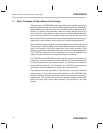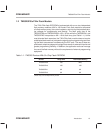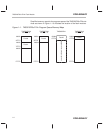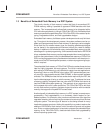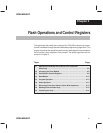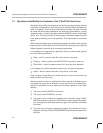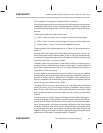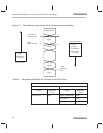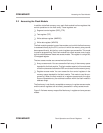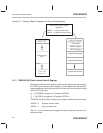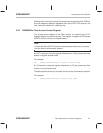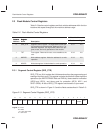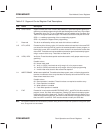
Operations that Modify the Contents of the ’F20x/F24x Flash Array
PRELIMINARY
2-2
PRELIMINARY
2.1 Operations that Modify the Contents of the ’F20x/F24x Flash Array
Operations that modify the contents of the flash array are generically referred
to as either “programming,” which drives one or more bits toward the logic zero
state, or “erasing,” which drives all bits towards the logic one state. It should
be noted that since these operations are performed incrementally, a single
“programming” or “erasing” operation does not ALWAYS result in a valid logic
one or zero. The result of each of these types of operations depends on the
initial state of the bit(s) prior to the operation. This is described in more detail
below.
Within these two basic types of operations (which are related to the fact that
there are only two valid logic levels in the F20x/F24x device) are four distinctly
different types of functions which are actually performed.
In the category of “programming” operations, there are three actual types of
functions that are performed:
- Clear – which is used to write ALL array bits to a zero state,
- Program – which is used to write SELECTED array bits to zero, and
- Flash-Write – which is used to recover ALL array bits from depletion
In the category of “erase” operations, there is only one type of operation:
- Erase – which is used to write ALL array bits to a one state.
Clear, Program, Flash-Write, and Erase are the only four functions that are
used to modify the flash array.
Assuming that the intent of a modification of the contents of the flash array is
to program the array with a selection of ones and zeroes, the following se-
quence of operations must be performed for proper operation of the flash
memory:
1) The array is first CLEARED to all zeroes.
2) The array is then ERASED to all ones.
3) The array is then checked for depletion and recovered using FLASH-
WRITE if necessary (note that if Flash-Write is used to recover from deple-
tion, this sequence must be started over again with the Clear and Erase
functions).
4) Once the array is properly cleared and erased, and verified not to be in
depletion, the array is then PROGRAMMED with the desired selection of
zero bits.





